
Trashigang: The Hidden Gem of Eastern Bhutan
Discover Trashigang, Bhutan's hidden gem in the east, where ancient traditions meet breathtaking landscapes and vibrant festivals, offering a unique and enriching experience.
Nestled in the remote eastern part of Bhutan, Trashigang is a town rich in history and culture. Often overshadowed by more popular destinations in the west, this hidden gem offers a unique glimpse into a way of life that has remained largely unchanged for centuries. The town serves as the gateway to the eastern Himalayas and is a hub for the region's bustling trade and commerce. The heart of Trashigang is its charming town square, surrounded by traditional Bhutanese architecture that stands as a testament to the country's rich heritage. Here, visitors can explore a variety of local shops and eateries, offering a taste of authentic Bhutanese cuisine and crafts. The town is also home to the Trashigang Dzong, a fortress and monastery with stunning views of the surrounding valleys and mountains. Built in the 17th century, the dzong is an architectural marvel and a significant religious site. A trip to Trashigang is incomplete without experiencing its vibrant festivals. The annual Trashigang Tshechu is a colorful event featuring traditional mask dances, music, and rituals that attract locals and tourists alike. Additionally, the nearby villages of Radhi and Phongmey are famous for their intricate handwoven textiles, providing an excellent opportunity for visitors to witness the artistry of Bhutanese weavers. Whether you're trekking in the scenic landscapes or immersing yourself in the local culture, Trashigang offers an enriching and unforgettable experience.
Local tips in Trashigang
- Visit the Trashigang Dzong for panoramic views and a deep dive into local history.
- Attend the Trashigang Tshechu festival if you're visiting in November or December.
- Explore local villages like Radhi and Phongmey to see traditional weaving and buy authentic textiles.
- Try local delicacies in the town's eateries, especially the traditional Bhutanese dishes.
- Plan your visit during the cooler months from October to December for the best weather.
Trashigang: The Hidden Gem of Eastern Bhutan
Nestled in the remote eastern part of Bhutan, Trashigang is a town rich in history and culture. Often overshadowed by more popular destinations in the west, this hidden gem offers a unique glimpse into a way of life that has remained largely unchanged for centuries. The town serves as the gateway to the eastern Himalayas and is a hub for the region's bustling trade and commerce. The heart of Trashigang is its charming town square, surrounded by traditional Bhutanese architecture that stands as a testament to the country's rich heritage. Here, visitors can explore a variety of local shops and eateries, offering a taste of authentic Bhutanese cuisine and crafts. The town is also home to the Trashigang Dzong, a fortress and monastery with stunning views of the surrounding valleys and mountains. Built in the 17th century, the dzong is an architectural marvel and a significant religious site. A trip to Trashigang is incomplete without experiencing its vibrant festivals. The annual Trashigang Tshechu is a colorful event featuring traditional mask dances, music, and rituals that attract locals and tourists alike. Additionally, the nearby villages of Radhi and Phongmey are famous for their intricate handwoven textiles, providing an excellent opportunity for visitors to witness the artistry of Bhutanese weavers. Whether you're trekking in the scenic landscapes or immersing yourself in the local culture, Trashigang offers an enriching and unforgettable experience.
When is the best time to go to Trashigang?
Iconic landmarks you can’t miss
Punakha Dzong སྤུ་ན་ཁ་རྫོང་།
Explore the stunning Punakha Dzong, a historical and spiritual fortress nestled in the heart of Bhutan, where culture and breathtaking scenery unite.

Phobjikha Valley
Explore the breathtaking Phobjikha Valley, a serene glacial paradise in Bhutan, rich in biodiversity and cultural heritage.

Trongsa Dzong ཀྲོང་གསར་རྫོང།
Explore the architectural splendor and cultural richness of Trongsa Dzong, a historical fortress-monastery in the heart of Bhutan.

Druk Deothjung
Discover the serene beauty and rich culture of Bhutan at Druk Deothjung, a tranquil hotel in Trashigang, perfect for your next getaway.

Trashigang Dzong
Explore the breathtaking Trashigang Dzong, a stunning fortress-monastery that embodies Bhutan's rich cultural heritage and offers spectacular valley views.

Chendebji Chorten སྤྱན་སྡེབ་སྦྱིས་མཆོད་རྟེན།
Discover the tranquility of Chendebji Chorten, a beautiful Buddhist temple along the Trashigang-Semtokha Highway, and immerse yourself in Bhutanese spirituality.

Rangjung Woesel Choling Dratshang
Explore the serene beauty and rich spiritual culture of Rangjung Woesel Choling Dratshang, a must-visit monastery in the heart of Bhutan.

Taa-Dzong བལྟ་རྫོང་།
Explore Taa-Dzong in Trongsa, Bhutan - a heritage museum showcasing the rich history and culture of the region through captivating exhibits and traditional artifacts.

Gom Kora
Discover the tranquil beauty and spiritual depth of Gom Kora, a serene Buddhist monastery nestled in the scenic landscapes of Trashiyangtse, Bhutan.

Jakar Dzong བྱ་དཀར་རྫོང་།
Explore the architectural wonder of Jakar Dzong in Bhutan, a stunning blend of history, culture, and breathtaking landscapes.

Lingkhar Lodge
Discover the charm of Bhutan at Lingkhar Lodge, a serene hotel offering stunning views, authentic cuisine, and cultural experiences in Trashigang.

Chador Lhakhang
Discover the serene beauty and rich spiritual heritage of Chador Lhakhang, a captivating Buddhist temple in the heart of Bhutan.

Pemaling Ney
Discover the serene beauty and spiritual depth of Pemaling Ney, a tranquil religious destination in Trashiyangtse, Bhutan, where nature and tradition converge.
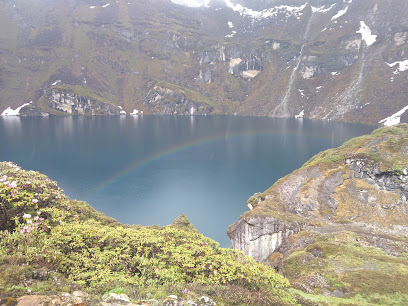
Rangshikhar Goenpa
Discover the serene beauty and spiritual essence of Rangshikhar Goenpa, a hidden gem in Bhutan's enchanting landscape.

Gongthung
Discover the serene beauty and rich history of Gongthung, a captivating historical site in Trashigang, Bhutan, where culture and nature converge.
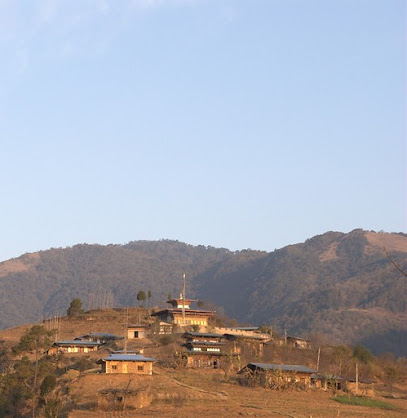
Unmissable attractions to see
Tawang War Memorial
Discover the solemn beauty of Tawang War Memorial, a tribute to valor amidst the breathtaking landscapes of Arunachal Pradesh.
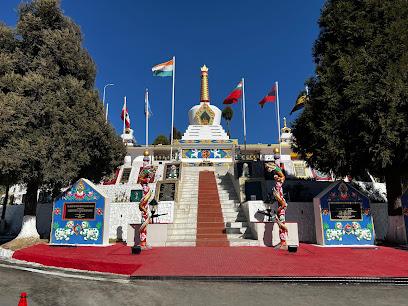
Chowki Picnic Spot
Discover the breathtaking beauty of Chowki Picnic Spot in Assam, where adventure meets tranquility in Manas National Park.

Indo-Bhutan Border Gateway
Discover the Indo-Bhutan Border Gateway: A vibrant cultural intersection filled with stunning landscapes and rich traditions.

Simtokha Dzong སེམས་རྟོགས་ཁ་རྫོང་།
Discover the architectural marvel of Simtokha Dzong, Bhutan's oldest fortress, rich in history and spirituality amidst breathtaking mountain views.

Phobjikha Valley
Explore the serene Phobjikha Valley, home to the rare black-necked cranes and stunning landscapes, a hidden gem in Bhutan's natural beauty.

Bhutan chowki
Explore the serene beauty and rich culture of Bhutan Chowki in Deothang, a hidden gem for travelers seeking authentic experiences in India.

Jamphel Lhakhang བྱམས་་པ་ལྷ་ཁང་།
Experience the serene beauty and spiritual depth of Jamphel Lhakhang, a historical Buddhist temple nestled in the tranquil landscape of Bumthang, Bhutan.

Sakteng Wildlife Sanctuary.
Explore Sakteng Wildlife Sanctuary, a breathtaking haven of biodiversity and culture in Bhutan, ideal for nature lovers and adventure seekers.

Chendebji Chorten སྤྱན་སྡེབ་སྦྱིས་མཆོད་རྟེན།
Experience tranquility and spirituality at Chendebji Chorten, a stunning Buddhist temple on the Trashigang-Semtokha Highway, rich in culture and heritage.

Taa-Dzong བལྟ་རྫོང་།
Explore the rich heritage of Bhutan at Taa-Dzong, a captivating museum showcasing cultural artifacts and history in the heart of Trongsa.

Lhuentse Dzong
Discover the enchanting Lhuentse Dzong, a historical fortress in Bhutan, rich with culture and breathtaking views.

Phrumsengla National Park
Discover the untouched beauty of Phrumsengla National Park, a paradise for nature lovers and adventure seekers in Bhutan's majestic landscapes.

Chador Lhakhang
Explore Chador Lhakhang, a serene Buddhist temple in Radi, and immerse yourself in Bhutan's rich spirituality and cultural heritage amidst stunning landscapes.

Dungkar Nagtshang
Experience the enchanting Dungkar Nagtshang, a historical landmark in Bhutan that offers a glimpse into the region's rich cultural heritage and architectural beauty.

ཡོན་ཕུག་ལ་ཨྱོན་མདོ་བསྔགས་ཆོས་གླིང་། (Ogyen Doh-Ngag Chokhorling Dratshang)
Discover tranquility and cultural richness at Ogyen Doh-Ngag Chokhorling Dratshang, a stunning Buddhist temple in the heart of Bhutan.

Essential places to dine
Lepcha Hotel
Discover the flavors of Bhutan at Lepcha Hotel in Trashigang - where tradition meets taste in an inviting setting.

Dechen Wangdi Restaurant & Lodge
Experience authentic Bhutanese cuisine at Dechen Wangdi Restaurant & Lodge in scenic Wamrong - where culture meets comfort.
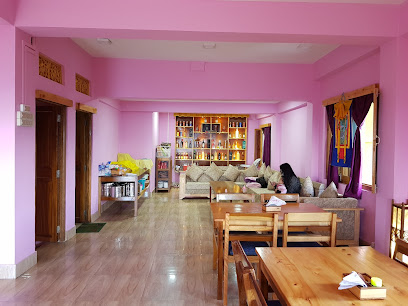
Tsangpo
Experience authentic local cuisine at Tsangpo in Pasaphu - where every meal tells a story of tradition and flavor.
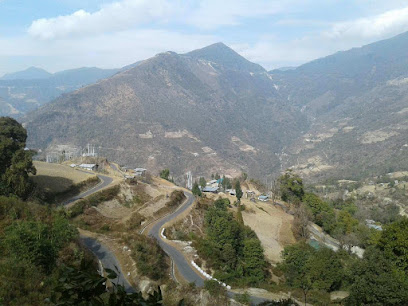
Tun Tun Restaurant
Discover authentic Bhutanese flavors at Tun Tun Restaurant in Radi – where every dish tells a story.

Trashigang Pizza
Discover delicious pizza infused with local flavors at Trashigang Pizza, where every bite takes you on a culinary adventure in Bhutan.
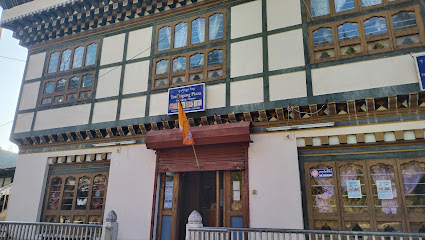
Nyendra Restaurant
Experience authentic Bhutanese cuisine at Nyendra Restaurant in Kanglung—where local flavors meet warm hospitality.

Coffee Cafe Restaurant
Experience authentic flavors and warm hospitality at Coffee Cafe Restaurant in Kanglung - a must-visit for every traveler.

Sisters Pizza hut
Experience authentic flavors at Sisters Pizza Hut in Rangjung—where local ingredients meet delicious culinary creations.

Utpel restaurant
Discover Utpel Restaurant in Trashigang - A family-friendly destination offering authentic Bhutanese cuisine in a welcoming atmosphere.

Bumthap Hotel
Discover the flavors of Bhutan at Bumthap Hotel in Trashiyangtse – where traditional meets contemporary in every dish.
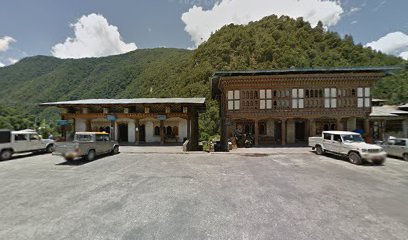
Tawmo Tshongkhang
Experience authentic Bhutanese flavors at Tawmo Tshongkhang in Trashiyangtse, where every dish tells a story.

Blind Date Pizza Hut
Experience the best pizza in Kanglung at Blind Date Pizza Hut—where flavor meets comfort in every slice.

Yumchen Restaurant
Experience authentic Bhutanese flavors at Yumchen Restaurant in Mongar - where every dish tells a story.

Mathang Zomsa Restaurant
Experience authentic Bhutanese cuisine at Mathang Zomsa Restaurant in Trashigang - where every meal tells a story.

GyaltshenDra Restaurant
Experience authentic Bhutanese cuisine at GyaltshenDra Restaurant in Kanglung - a culinary journey through tradition and flavor.

Markets, malls and hidden boutiques
Kota Shopping Center
Discover the diverse offerings at Kota Shopping Center, a bustling hub for hardware and local goods in Trashigang, Bhutan.
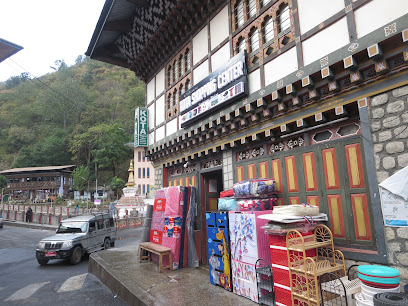
Pema general shop
Discover the heart of Trashigang at Pema General Shop, where local flavors meet everyday essentials in a warm, inviting atmosphere.

TASHIYANGPHEL BAKERY
Discover the authentic flavors of Bhutan at Tashiyangphel Bakery in Trashigang, where every bite tells a story.

Nanga Enterprise
Discover the vibrant shopping experience at Nanga Enterprise, where traditional Bhutanese culture meets modern retail in the heart of Trashigang.

PEMA LHENDRUP HANDICRAFT
Explore the vibrant craftsmanship of Bhutan at Pema Lhendrup Handicraft, where traditional clothing meets unique artistry in Radi.

S. T Garments. (new Shop)
Explore S. T Garments in Trashigang – a vibrant shopping mall offering unique local garments and souvenirs in the heart of Bhutan.

Jimmy's Tech
Discover top-notch electronics and exceptional service at Jimmy's Tech in Trashigang, your ultimate destination for technology needs.

J.C Store.
Explore the vibrant J.C Store in Kanglung, where local culture meets unique shopping, offering a delightful mix of traditional crafts and modern products.

Thrimzang General Shop
Explore the charm of Pasaphu at Thrimzang General Shop, where local goods and friendly service await every traveler.

Tshering Dorji General Store
Explore the heart of Trashigang at Tshering Dorji General Store, where local culture meets unique shopping experiences.

Jambay Lhamo General Shop And Bar
Explore local culture at Jambay Lhamo General Shop And Bar in Radi, offering unique souvenirs, snacks, and a taste of Bhutanese hospitality.

NP General Store
Discover the local charm and unique offerings of NP General Store in Kanglung, a must-visit shopping destination for every traveler.

Tshering Lhamo General Shop
Explore the rich offerings of Tshering Lhamo General Shop in Trashigang, where local culture meets unique shopping experiences.
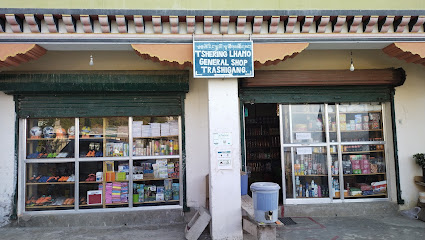
Jigme Tenzin General Shop
Explore the charm of Khaling at Jigme Tenzin General Shop, your destination for local goods and unique Bhutanese crafts.

Vegetable & Diary Market
Discover the vibrant Vegetable & Dairy Market in Trashigang, a cultural hub showcasing fresh produce and local flavors in a lively setting.
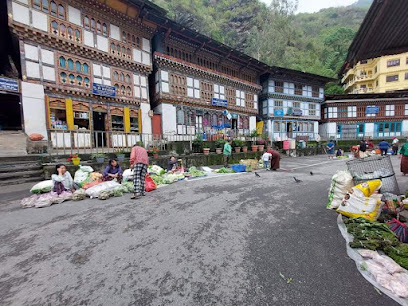
Essential bars & hidden hideouts
Tun Tun Restaurant
Experience the best of local cuisine at Tun Tun Restaurant, where every meal is a flavorful journey in the heart of Radi.

Trashigang Pizza
Experience the taste of Italy in Bhutan at Trashigang Pizza, where passion for pizza meets local charm in the heart of Trashigang.

TP's Bar
Discover the vibrant atmosphere of TP's Bar in Lingmethang, where local culture meets refreshing drinks and friendly faces.

Jigyel Karaoke འཇིགས་རྒྱལ་སྤྲོ་གླུ་ཁང་།
Experience the vibrant nightlife of Trashiyangtse at Jigyel Karaoke, where music, laughter, and unforgettable moments await every visitor.

Goktey General Shop & Bar
Experience the essence of Bhutan at Goktey General Shop & Bar, where local culture meets hospitality in a cozy setting.
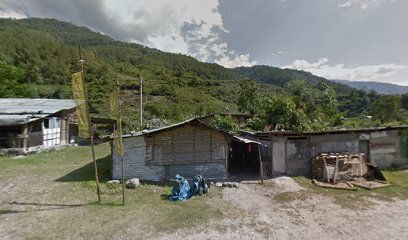
Trashigang
Explore Trashigang, Bhutan: A scenic town rich in culture, history, and adventure amidst the majestic Himalayas.

Ura Yurgang
Experience the warmth of Bhutanese hospitality at Ura Yurgang, a charming bar that invites you to unwind and connect with the local culture.

Norbu Dema Bar Cum Resutarant
Experience the best of Bhutanese cuisine and vibrant nightlife at Norbu Dema Bar Cum Restaurant in Radi.

Thinley General shop and bar
Experience the charm of Bhutanese culture at Thinley General Shop and Bar in Serzhong, where local flavors and hospitality create unforgettable memories.

Cheku Bar and Restaurant
Discover the vibrant ambiance and diverse menu at Cheku Bar and Restaurant, the perfect gathering spot for tourists in Riserboo.

Dechen Zangmo Hotel cum Bar
Discover the warmth of family-friendly hospitality at Dechen Zangmo Hotel cum Bar in Trashiyangtse, where comfort meets local flavor.

SHAANU RESTAURANT
Experience the rich culinary traditions of Bhutan at Shaanu Restaurant in TBank, where every dish tells a story.

Village Restro Bar
Experience the vibrant local culture and unwind at Village Restro Bar in Trashigang, a perfect spot for tourists to relax and enjoy delicious snacks and drinks.
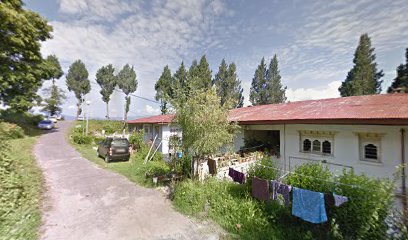
Yeshi Lhamo Restaurant
Discover authentic Bhutanese cuisine and vibrant local atmosphere at Yeshi Lhamo Restaurant in Trashiyangtse.

DOKSUM KARAOKE
Experience the joy of singing at DOKSUM KARAOKE, a vibrant bar in Trashiyangtse where music and local culture come alive.

Local Phrases
-
- Helloཇོ བོ
[jo bo] - Goodbyeབྱ ཀོ
[ja ko] - Yesགཏོ
[ta] - Noགམོ
[ma] - Please/You're welcomeསྐུ བོ
[sku bo] - Thank youལས བོ
[la bo] - Excuse me/Sorryདང ལ གཚ བོ
[dang la tsa bo] - How are you?ཁ སྤྱིན ཅ ད ངས བ སྐ བོ?
[kha spyin cha dang sa ku bo?] - Fine. And you?སྤྱིན ཅ ད ང སྐ བོ. ང སྐ བོ?
[spyin cha dang sa ku bo. nga sa ku bo?] - Do you speak English?ད ང ཨགིན སྐ བོ གཏོ?
[da nga angin sa ku bo ta?] - I don't understandཁ སྐ བོ ལ རེག ཏོ
[kha ku bo la re ta]
- Helloཇོ བོ
-
- I'd like to see the menu, pleaseད ང མཚ ཏ མཐ ས ས སྐ བོ
[da nga tsa tha ta sa ku bo] - I don't eat meatཁ ཨགར གཏ སྐ བོ
[kha ag rta sa ku bo] - Cheers!གཏོ ལར གཏ མཐ ས སྐ བོ
[to la rta tha ta sa ku bo] - I would like to pay, pleaseད ང སྐུ གཏ ཞ ས སྐ བོ
[da nga sku ta zha ta sa ku bo]
- I'd like to see the menu, pleaseད ང མཚ ཏ མཐ ས ས སྐ བོ
-
- Help!གས མང ར ཕ ར
[ga mang ra pha ra] - Go away!ཆོ ཡ ལ ར
[cho ya la ra] - Call the Police!མོ བོ ཆོ ཡ སྡ ར
[mo bo cho ya da ra] - Call a doctor!མོ བོ དོཀ ཏ ར
[mo bo dok ta ra] - I'm lostཁ མང ར ཤ ར
[kha mang ra sha ra] - I'm illཁ རནམ ཡ
[kha renam ya]
- Help!གས མང ར ཕ ར
-
- I'd like to buy...ད ང དམ ཡ གཏ སྐ བོ
[da nga dam ya ta sa ku bo] - I'm just lookingཁ རང ཨགར སྐ བོ
[kha rang ag ra sa ku bo] - How much is it?ཁ ཨགིན གཏ སྐ བོ?
[kha angin ta sa ku bo?] - That's too expensiveད དམ སྐ བོ
[da dam sa ku bo] - Can you lower the price?ཁ ཨགིན གཏ སྐ བོ?
[kha angin ta sa ku bo?]
- I'd like to buy...ད ང དམ ཡ གཏ སྐ བོ
-
- What time is it?ཁ གིན ད མ བ ཤ ར?
[kha gin da ma ba sha ra?] - It's one o'clockད མ ཚ ས
[da ma tsa sa] - Half past (10)ཏ ཚ ད
[ta tsa da] - Morningསྤར
[spar] - Afternoonཕར
[phar] - Eveningརིང
[ring] - Yesterdayཁ སྤས
[kha spar] - Todayཁ གིན
[kha gin] - Tomorrowཁ རར
[kha rar] - 1ལ
[la] - 2ག
[ga] - 3བ
[ba] - 4བྱ
[ja] - 5ལྔ
[langa] - 6དྔ
[danga] - 7བར
[bara] - 8བས
[basa] - 9དག
[dag] - 10བཅ
[bcha]
- What time is it?ཁ གིན ད མ བ ཤ ར?
-
- Where's a/the...?ཁ ཨགིན ད ང?
[kha angin da nga?] - What's the address?ཁ ཨགིན སྡ ར?
[kha angin da ra?] - Can you show me (on the map)?ཁ ཨགིན གཏ ཞ ར སྡ ར?
[kha angin ta zha ra da ra?] - When's the next (bus)?ཁ ཨགིན ད ང སྡ ར?
[kha angin da nga da ra?] - A ticket (to ....)ཏ ཨགིན ཀིཏ ཏ (ད ཨགིན)
[ta angin kid ta (da angin)]
- Where's a/the...?ཁ ཨགིན ད ང?
History of Trashigang
-
Trashigang Dzong, also known as 'The Fortress of the Auspicious Hill,' was constructed in 1659 by Chögyal Minjur Tempa, the third Desi of Bhutan. This historic dzong was built to defend against Tibetan invasions and to consolidate the power of the central government. The dzong overlooks the confluence of the Drangme Chhu and the Gamri Chhu rivers, offering strategic and scenic value.
-
In the 17th century, Trashigang played a crucial role in Bhutan's unification. The region's strategic location made it a vital point for maintaining control over eastern Bhutan. The dzong served not only as a fortress but also as an administrative center, helping to extend the central authority of the Bhutanese government.
-
In the late 19th century, Trashigang came into the spotlight during the British expedition led by Sir Ashley Eden in 1864. Although the expedition primarily focused on the western regions of Bhutan, the influence extended to the east, including Trashigang, marking the beginning of diplomatic interactions between Bhutan and British India.
-
Trashigang is renowned for its vibrant festivals, particularly the annual Trashigang Tshechu, held in the dzong courtyard. This festival, celebrated with masked dances, music, and spiritual ceremonies, attracts thousands of devotees and tourists. The Tshechu is dedicated to Guru Rinpoche, who is believed to have introduced Tantric Buddhism to Bhutan in the 8th century.
-
In recent decades, Trashigang has seen significant modernization while preserving its rich cultural heritage. The establishment of educational institutions like Sherubtse College in Kanglung has transformed the region into an academic hub. Infrastructure developments, including improved road networks, have made Trashigang more accessible, fostering tourism and economic growth.
-
Buddhism profoundly influences the culture and daily life in Trashigang. Monasteries scattered throughout the district serve as centers for religious learning and practice. The presence of sacred sites and continuous religious activities underscore the spiritual significance of the region, making it a pilgrimage destination for many Bhutanese.
Trashigang Essentials
-
Trashigang is located in eastern Bhutan. The nearest international airport is Paro International Airport, approximately 550 kilometers away. From Paro, you can take a domestic flight to Yonphula Airport, which is about 30 kilometers from Trashigang. Alternatively, you can travel by road from Thimphu or Paro, which usually takes around 2 days by bus or taxi due to the mountainous terrain.
-
Trashigang is a relatively small town, and many attractions are within walking distance. Local taxis are available for longer trips and are reasonably priced. Public buses connect Trashigang to other parts of Bhutan, but schedules can be irregular. Renting a car is an option, but driving can be challenging due to the hilly and winding roads.
-
The official currency in Bhutan is the Bhutanese Ngultrum (BTN). Indian Rupees (INR) are also widely accepted. Credit cards are accepted in some hotels and shops, but it is advisable to carry cash, especially in smaller establishments and rural areas. ATMs are available, but they may not always be reliable, so ensure you have enough cash on hand.
-
Trashigang is generally a safe destination for tourists. However, take standard precautions such as avoiding walking alone at night in unfamiliar areas and keeping an eye on your belongings in crowded places. There are no specific high-crime areas targeting tourists, but it's always best to stay vigilant and aware of your surroundings.
-
In case of emergency, dial 113 for police assistance or 112 for medical emergencies. Trashigang has a local hospital and several clinics. It is recommended to have travel insurance that covers medical emergencies. Pharmacies are available in town where you can purchase over-the-counter medications.
-
Fashion: Do dress modestly, especially when visiting religious sites. Avoid wearing revealing clothing. Religion: Do respect local customs and traditions. Always remove your shoes and cover your head when entering temples and monasteries. Public Transport: Do be respectful and give up your seat to elderly passengers. Don't eat or drink on public transport. Greetings: Do greet people with a slight bow and the traditional 'Kuzuzangpo La'. Eating & Drinking: Do try local delicacies and accept food offerings graciously. Don’t refuse hospitality, as it is considered impolite.
-
To experience Trashigang like a local, visit the weekend market where you can buy fresh produce and traditional Bhutanese goods. Engage with locals, as they are often friendly and willing to share stories about the town's history and culture. Don't miss visiting the Trashigang Dzong, which offers a glimpse into Bhutanese architecture and history. For a unique experience, attend local festivals such as the Trashigang Tshechu, which features traditional dances and cultural performances.
Trending Landmark in Trashigang
-
Punakha Dzong སྤུ་ན་ཁ་རྫོང་།
-
Phobjikha Valley
-
Trongsa Dzong ཀྲོང་གསར་རྫོང།
-
Druk Deothjung
-
Trashigang Dzong
-
Chendebji Chorten སྤྱན་སྡེབ་སྦྱིས་མཆོད་རྟེན།
-
Rangjung Woesel Choling Dratshang
-
Taa-Dzong བལྟ་རྫོང་།
-
Gom Kora
-
Jakar Dzong བྱ་དཀར་རྫོང་།
-
Lingkhar Lodge
-
Chador Lhakhang
-
Pemaling Ney
-
Rangshikhar Goenpa
-
Gongthung
Nearby Cities to Trashigang
-
Things To Do in Mongar
-
Things To Do in Jakar
-
Things To Do in Bumthang
-
Things To Do in Trongsa
-
Things To Do in Guwahati
-
Things To Do in Wangdue Phodrang
-
Things To Do in Punakha
-
Things To Do in Thimphu
-
Things To Do in Shillong
-
Things To Do in Itanagar
-
Things To Do in Paro
-
Things To Do in Phuentsholing
-
Things To Do in Sylhet
-
Things To Do in Rangpur
-
Things To Do in Gangtok








